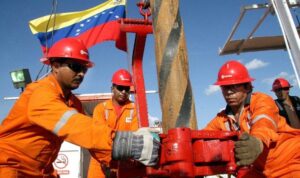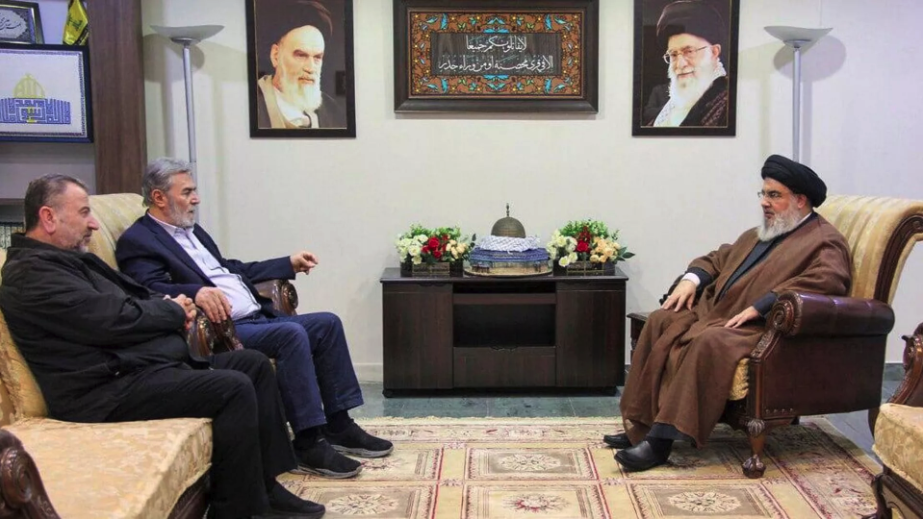
Published 10/26/2023 08:54 | Edited 10/26/2023 09:30
This Wednesday (25), the head of Hezbollah, Sayyed Hassan Nasrallah, met with the deputy head of Hamas, Saleh al-Arouri, and the head of Islamic Jihad, Ziad al-Nakhala to outline strategies on how to “stop the brutal attack on the oppressed people of Gaza and the West Bank,” the Lebanese group reported, according to Lebanese state media Al-Manar.
“The leaders addressed the latest developments since the start of the Al-Aqsa Flood operation [os atentados de 7 de outubro] and the events that followed on all fronts, including the clashes across the border between Lebanon and occupied Palestine. Sayyed Nasrallah assessed with Nakhale and al-Arouri the international and regional positions, as well as the measures to be taken by the Axis of Resistance in this critical phase, in order to achieve total victory and stop the brutal attack on the oppressed people of Gaza and the West Bank ”, said the Hezbollah statement cited by the media.
Since the October 7 attack, Hezbollah has engaged in almost daily exchanges of fire with Israeli forces along the Israeli-Lebanese border. The group announced today (25) that two more of its fighters were killed, increasing the number of militants killed to 40 since the beginning of the conflict.
Radiation of conflict
In an interview with Red Portal, Lebanese Communist Party Organization leader Firas Al-Masry said that Hezbollah has established two “red lines” for its involvement: the forced displacement of the Palestinian people from their lands and an Israeli ground invasion that threatens Palestinian resistance. The leader of the Lebanese Communist Party emphasized that the resistance is ready to intervene if these red lines are crossed, believing that this is the time for regional resistance forces to make a difference in support of the Palestinian cause.
The communist leader described a heroic and professional response by the resistance, causing significant losses to the Israeli army. The clash took place within Lebanon’s borders, with casualties on the Israeli side. The Lebanese lamented the lack of international media coverage of these events. According to him, this “heroic” resistance occurs despite the economic and political instability in the country, which is ungoverned by a sectarian and “disastrous” political system, and inflation that has profoundly deteriorated the lives of Lebanese workers.
Amid fears the conflict could spread across the Middle East, Israel’s military said its jets also hit Syrian army infrastructure in response to rockets fired from the neighboring country. The Syrian news agency (SANA) cited a military source as reporting that the Israeli attack killed eight soldiers and injured seven others near the southwestern city of Deraa.
Yesterday (24), the Ministry of Health said that 704 Palestinians, including 305 children, were killed as Israel intensifies its aggression against the enclave. To date, the clash between Israel and Hamas has killed 1,400 Israelis and 6,500 Palestinians.
The UN Office for the Coordination of Humanitarian Affairs (OCHA) said Tuesday’s death toll was the highest reported in a single day since the start of the conflict.
At the same time, Israeli officials have been warning Hezbollah about the escalation. According to Tzachi HanegbiNational Security Advisor to Israeli Prime Minister Benjamin Netanyahu, Tel Aviv “passed messages” to Hezbollah to discourage the group from joining Hamas in a war against the Jewish state.
“Our goal is not to be drawn into a war on two fronts. We think that Hezbollah will not invite the destruction of Lebanon, because it will be no less than that if there is a war there,” Hanegbi said, as reported.
Hezbollah
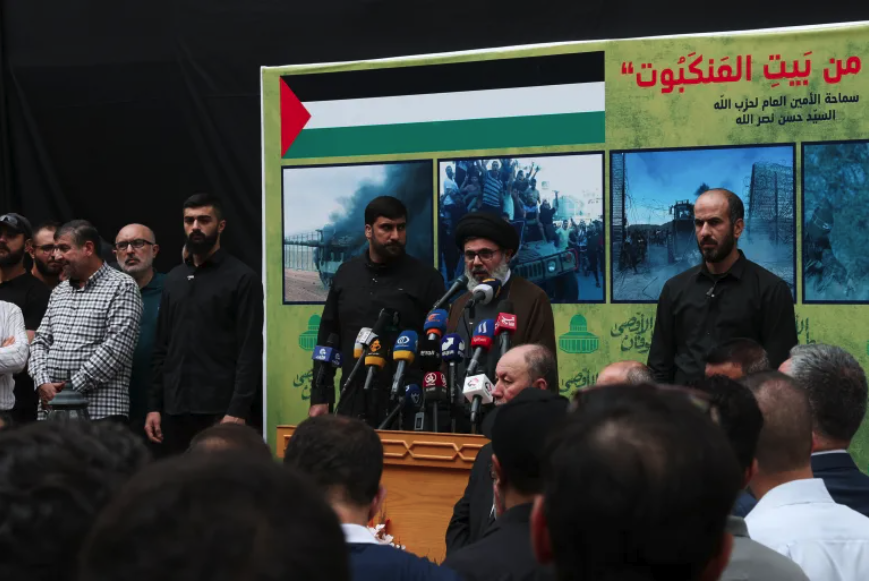
Sayyed Hashem Safieddine, a senior Hezbollah official, speaks as supporters of the Lebanon-based group take part in a rally to express solidarity with the Palestinians
Hezbollah, which means “Party of God”, is an Iranian-backed Shiite armed and political group that was formed in 1982 to combat the Israeli occupation of southern Lebanon. Palestinian groups in Lebanon also include Hamas, the secular Fatah party and the Popular Front for the Liberation of Palestine (PFLP).
It emerged from the armed groups formed by Iran’s Islamic Revolutionary Guard Corps, following Israel’s invasion of Lebanon in 1982. The group, which finds its support among Shiite Muslims, is one of Israel’s greatest enemies in the region.
In 2021, leader Hassan Nasrallah stated that Hezbollah had 100,000 fighters. The group has precision rockets and claims they can reach all parts of Israel. The United States estimates that Iran has allocated hundreds of millions of dollars annually to Hezbollah.
The group, led by Nasrallah since 1992, is one of the most influential blocs in Lebanon’s sectarian political system, enjoying the support of a large part of the Shi’ite population. The group is often dubbed “a state within a state” due to its vast network of political and military forces deployed in a country divided along sectarian lines.
Israeli forces unilaterally withdrew from southern Lebanon in 2000 after nearly 20 years of deadly fighting, prompting Hezbollah to proclaim itself the first Arab army to force Israel to cede control of the territory.
Hamas
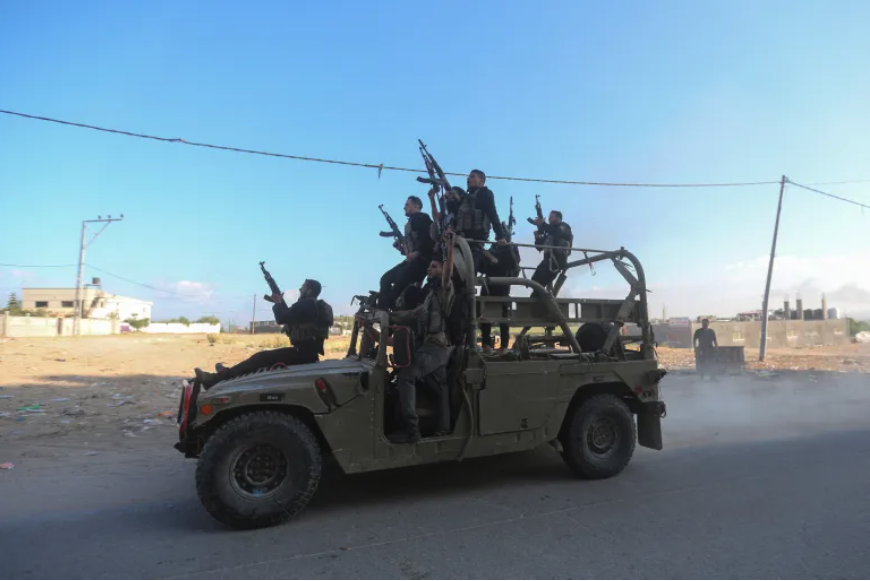
Palestinian fighters in the northern Gaza Strip drive an Israeli military vehicle that was seized after Hamas entered areas of southern Israel on October 7, 2023
Hezbollah and Hamas are separate entities, but they share the common goal of armed resistance against Israel. While Hezbollah is a Lebanese organization, Hamas is a Palestinian group that was formed in Gaza in 1987, after the start of the first Intifada, an uprising against Israel’s occupation of Palestinian territories. Hamas politically controls the Gaza Strip after winning elections in 2006.
The latest conflict highlighted Israel’s 16-year blockade of the Gaza Strip and its policy of expanding settlements in the occupied West Bank and East Jerusalem.
The leaders of Hezbollah and Hamas met in 2020 to discuss the normalization of relations between Israel and Arab countries. In a statement, Hezbollah explained that the Hamas attack was a “decisive response to the continued occupation of Israel and a message to those seeking normalization with Israel,” referring to Arab countries seeking to normalize ties with Israel.
Hamas means Islamic Resistance Movement and in Arabic it means “zeal”. The group politically controls the Gaza Strip, a territory of around 365 square kilometers that is home to more than two million people, but which is blockaded by Israel.
Hamas has been in power in the Gaza Strip since 2007, following a brief war against Fatah forces loyal to President Mahmoud Abbas, head of the Palestinian Authority and the Palestine Liberation Organization (PLO).
The Hamas movement was founded in Gaza in 1987 by an imam, Sheikh Ahmed Yasin, and his advisor Abdul Aziz al-Rantissi, shortly after the start of the first Intifada, an uprising against Israel’s occupation of the Palestinian territories.
The movement began as an offshoot of the Muslim Brotherhood in Egypt and created a military wing, the Izz al-Din al-Qassam Brigades, to pursue an armed struggle against Israel with the aim of liberating historic Palestine.
Unlike the PLO, Hamas does not recognize Israel’s statehood, but accepts a Palestinian state on the 1967 borders. “We will not give up an inch of Palestinian territory, regardless of recent pressures and the duration of the occupation,” said Khaled Meshaal , the exiled leader of the Palestinian group, in 2017.
Hamas violently opposes the Oslo peace accords negotiated by Israel and the PLO in the mid-1990s.
Hamas is part of a regional alliance that also includes Iran, Syria and the Hezbollah group in Lebanon, which oppose US policies toward the Middle East and Israel.
Hamas and Islamic Jihad, the second largest armed group in the region, are often united against Israel and are the most important members of the joint operations room that coordinates military activity between the various armed groups in Gaza. Sometimes they disagree about tactics.
Hamas claims it was not attacking civilians on October 7, but settlers. “We are not targeting civilians on purpose. We declare that the settlers are part of the occupation and are part of the Israeli armed force. They are not civilians,” he added. Jewish settlements advance into Palestinian territories and expel the original residents with violence and military support and are generally formed by more orthodox Jewish sectors with a strong Zionist ideology.
Islamic Jihad
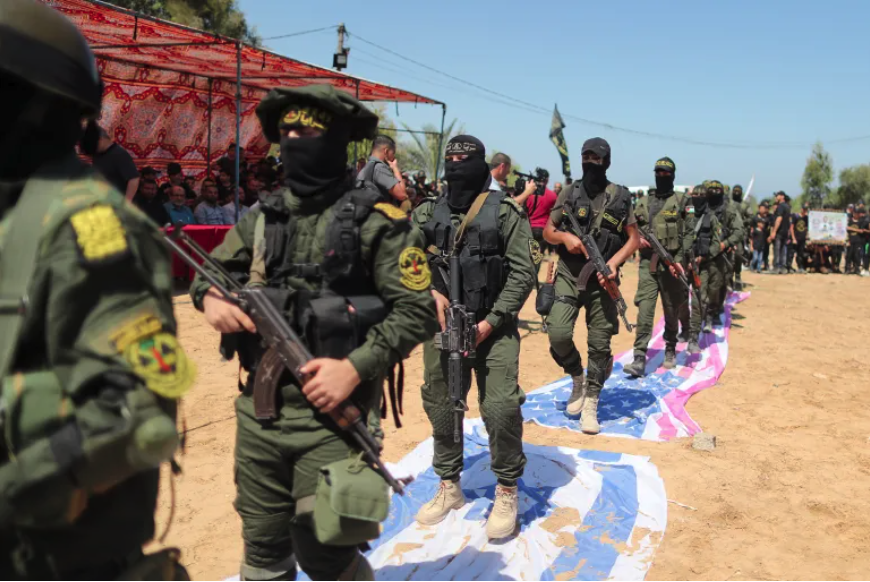
As recently as August 2022, Israel repeatedly launched airstrikes in the Gaza Strip, killing at least 15 people, including a commander of the Palestinian Islamic Jihad movement.
After bombing Gaza, Israeli Prime Minister Yair Lapid described Palestinian Islamic Jihad (PIJ) as “an Iranian proxy that wants to destroy the State of Israel”.
Although it does not have long-range rockets like Hamas – the group that governs Gaza, the PIJ has a significant arsenal of small arms, mortars, rockets and anti-tank missiles, and an active armed wing called al-Quds Brigades.
Islamic Jihad is known for opposing the peace process and negotiating approach with Israel. It adopts an armed struggle against the Israeli occupation, but unlike Hamas, the PIJ refuses to participate in elections and appears to have no ambition to form a government in Gaza or the West Bank. Islamic Jihad is a very close ally of Iran, a government with which its leaders have already publicly met.
Palestinian Islamic Jihad was founded in 1981 by Palestinian students in Egypt with the aim of establishing a Palestinian state in the occupied West Bank, Gaza and other areas of what is now Israel. Islamic Jihad is the smaller of the two main Palestinian groups in the Gaza Strip and is vastly outnumbered by the ruling group Hamas.
Iran provides Islamic Jihad with training, expertise and funding, but most of the group’s weapons are produced locally. Although its base is Gaza, Islamic Jihad also has leadership in Lebanon and Syria, where it maintains close ties with Iranian authorities.
Both Hamas, which has fought six wars with Israel since 2009, Hezbollah, and PIJ are listed as “terrorist organizations” by the US and Europe. There are shades of tolerance from some countries, such as the political wing of Hezbollah in the Lebanese government, but even countries like Russia have restrictions on these groups.
Source: vermelho.org.br
